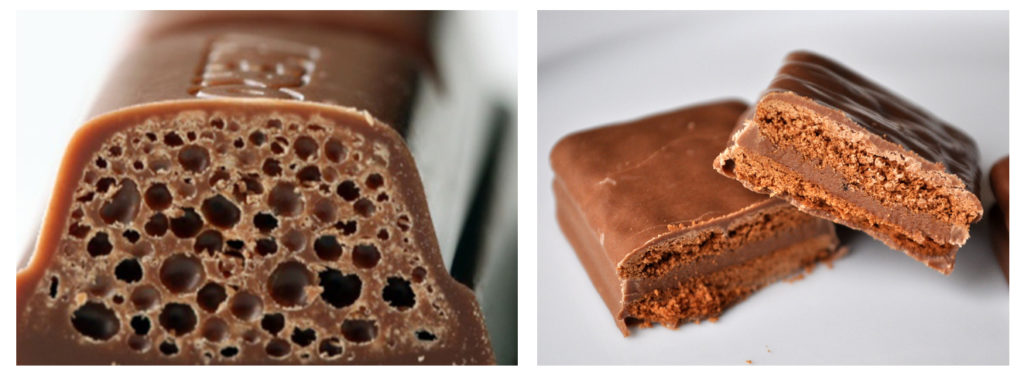Carbon capture has been in the news a lot recently, but what exactly is it? Never fear, we're here to help explain this technical topic (using chocolate!).

Chocolate: the tastiest way to explain a complex process
We’re researching a broad portfolio of energy technologies to ensure we can keep the lights on, remain economically competitive and importantly, lower emissions. Carbon capture and storage (CCS) is one key solution, and our researchers are on the case.
But what exactly is CCS? How does it work? What can it achieve? How can I sound super-smart when I’m with my friends and the topic comes up? Never fear, we gentle science folk are here to help give you the scoop on this technical topic (including the best kind of analogy: a chocolate-based one).
How does it work?
CCS is a process used to capture carbon dioxide (CO2) gas emitted while producing power or making materials such as steel, cement or fertiliser. Broadly speaking, the gas is captured, transported, and then safely stored underground – permanently. By doing this, we can typically capture 90 per cent of the CO2 that would otherwise be emitted from power stations and industrial facilities.
Capture
Energy from fossil fuels such as coal, oil and natural gas is released in the combustion (burning) and conversion process, which also results in the emission of CO2 as a by-product. It’s possible to capture the gas before it is emitted, and we’re working at Victoria’s AGL Loy Yang Power Station to make the capture process more efficient.
Transport
CO2 is transported by pipeline, truck, rail or ship. In fact, there are already many pipelines around the world that safely transport large amounts of CO2 every day.
Uses
The gas also has many uses in the food and beverage industry (like creating the bubbles in your soft drink!) and it can assist with industrial processes such as the recovery of oil from underground. Of course, there’s only so much soft drink we can consume, so we also need to think about what to do with the remaining CO2.
Storing CO2
Once CO2 has been captured and transported, it is injected deep underground, usually at depths of over 1 km. This process is sometimes called ‘geosequestration’. Generally, the rock needs three features to be suitable:
- Sufficient pore spaces in which CO2can be contained (porosity)
- Pathways connecting the pore spaces for the CO2to move through (permeability)
- A solid, sealing layer of rock on top of the porous, permeable layer, to stop the CO2moving outside the target area (seal or ‘cap rock’).
Here’s a delicious example of why these geological features are important.

A Tim Tam and an aerobar
The humble Tim Tam is a lot like a reservoir rock, while the Aero Bar, although seriously delicious, has no chance of holding your milk. Images: seriouseats.com and foodproductiondaily.com
Let’s consider a Tim Tam and an Aero Bar as two possible types of reservoir rock and milk as our CO2. Both chocolate bars have plenty of porous space in them, yet if you bite an end off each and try to use them as a straw through which to draw milk, the permeability of the Tim Tam will allow the milk to be pulled through the porous spaces into your mouth, but the Aero bar won’t.
This is because the Aero Bar, although porous, does not have any channels connecting the spaces and therefore the milk cannot move through the chocolate. The principle is the same for the reservoir rock needed to store CO2. The CO2 needs to be able to move through the rock and fill all the porous spaces.
Storage of CO2 has safely happened around the world for many years, and we’re finessing the finer points at our National Geosequestration Laboratory.
Serious potential
In addition to limiting the emissions expended to power our homes, CCS can play a vital role in decarbonising energy-intensive industries (such as steel production) which involve the continued use of fossil fuels. If fossil fuel is replaced by biomass, applying CCS will actually start to directly reduce the CO2 levels in the atmosphere, demonstrating its large potential for climate change mitigation.
While we’re working on making these technologies more efficient and cost effective, a number of major CCS projects are already operating or being built, capturing and storing many million tonnes of CO2 per year.


7th July 2019 at 2:33 pm
A science article without scientific detail. I call it a puff piece haha
7th July 2017 at 4:12 pm
Shouldn’t it be called oxygen capture and storage? You are removing twice as much oxygen from the atmosphere as carbon after all.
5th April 2017 at 12:33 pm
There already was a carbon capture process. It is about 300 million years old. Can you guess the product was? —————————————–> it is called coal.
4th April 2017 at 7:15 am
Maybe CSIRO could use the analogy to explain why hydraulic fracture stimulation is necessary for some types of reservoir and get rid of the hysteria surrounding it.